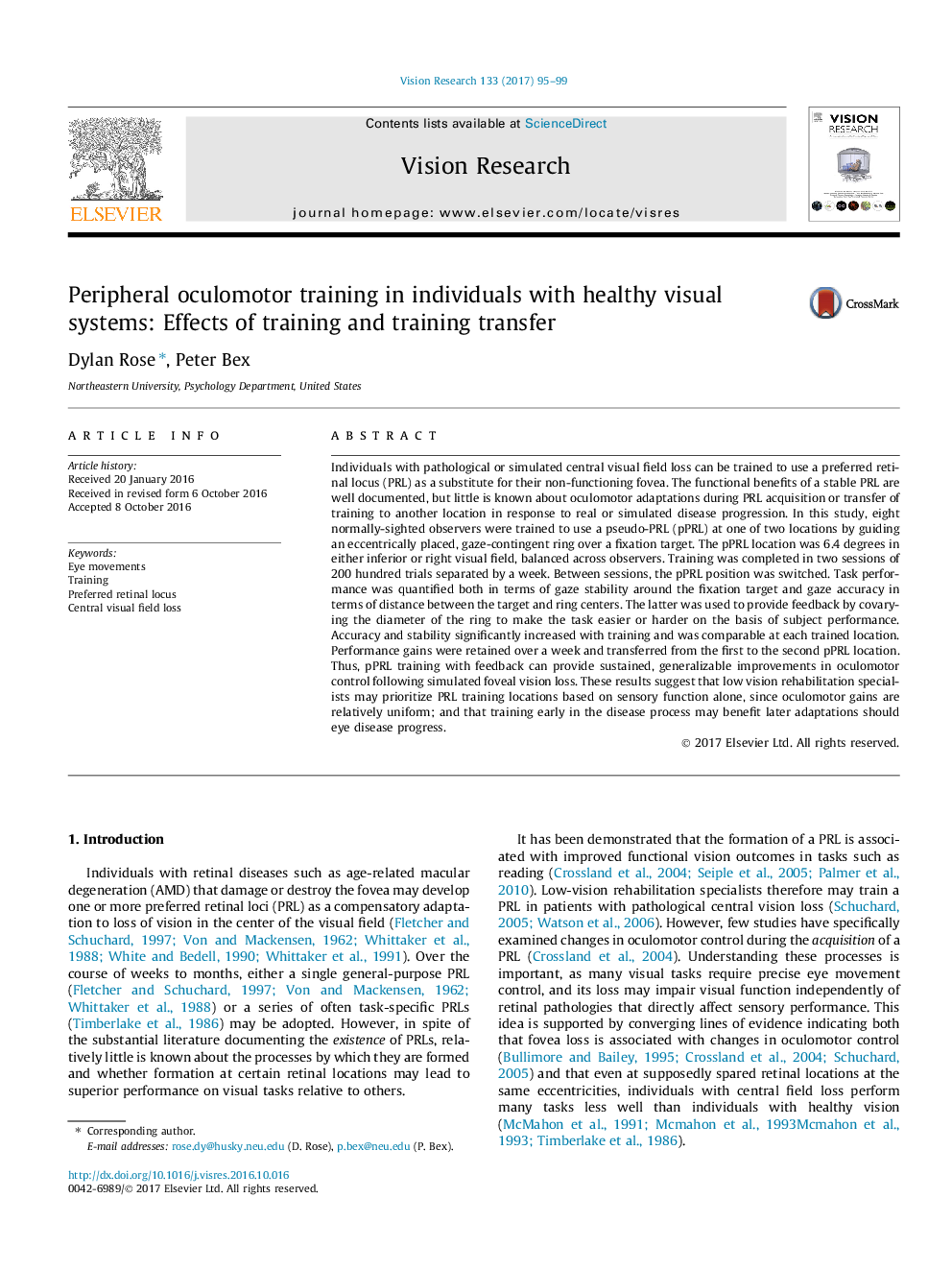| کد مقاله | کد نشریه | سال انتشار | مقاله انگلیسی | نسخه تمام متن |
|---|---|---|---|---|
| 5705893 | 1603166 | 2017 | 5 صفحه PDF | دانلود رایگان |
عنوان انگلیسی مقاله ISI
Peripheral oculomotor training in individuals with healthy visual systems: Effects of training and training transfer
ترجمه فارسی عنوان
آموزش ایکولوموتور محیطی در افراد با سیستم های منظم سالم: تاثیر آموزش و انتقال آموزش
دانلود مقاله + سفارش ترجمه
دانلود مقاله ISI انگلیسی
رایگان برای ایرانیان
کلمات کلیدی
حرکات چشم، آموزش، لوستر شبکیه مطلوب از بین رفتن میدان دید مرکزی،
موضوعات مرتبط
علوم زیستی و بیوفناوری
علم عصب شناسی
سیستم های حسی
چکیده انگلیسی
Individuals with pathological or simulated central visual field loss can be trained to use a preferred retinal locus (PRL) as a substitute for their non-functioning fovea. The functional benefits of a stable PRL are well documented, but little is known about oculomotor adaptations during PRL acquisition or transfer of training to another location in response to real or simulated disease progression. In this study, eight normally-sighted observers were trained to use a pseudo-PRL (pPRL) at one of two locations by guiding an eccentrically placed, gaze-contingent ring over a fixation target. The pPRL location was 6.4 degrees in either inferior or right visual field, balanced across observers. Training was completed in two sessions of 200 hundred trials separated by a week. Between sessions, the pPRL position was switched. Task performance was quantified both in terms of gaze stability around the fixation target and gaze accuracy in terms of distance between the target and ring centers. The latter was used to provide feedback by covarying the diameter of the ring to make the task easier or harder on the basis of subject performance. Accuracy and stability significantly increased with training and was comparable at each trained location. Performance gains were retained over a week and transferred from the first to the second pPRL location. Thus, pPRL training with feedback can provide sustained, generalizable improvements in oculomotor control following simulated foveal vision loss. These results suggest that low vision rehabilitation specialists may prioritize PRL training locations based on sensory function alone, since oculomotor gains are relatively uniform; and that training early in the disease process may benefit later adaptations should eye disease progress.
ناشر
Database: Elsevier - ScienceDirect (ساینس دایرکت)
Journal: Vision Research - Volume 133, April 2017, Pages 95-99
Journal: Vision Research - Volume 133, April 2017, Pages 95-99
نویسندگان
Dylan Rose, Peter Bex,
